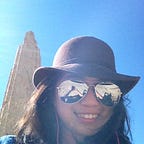A Journalist’s Reflection on Goya’s “The Third of May 1808”
The first time I saw Francisco de Goya’s masterpiece “The Third of May 1808”, I was impressed by how succinctly it portrayed the chaos of human dynamics in the context of war. Goya’s composition of visual elements managed to highlight both the humane and inhumane characteristics of his subjects. While I have no personal connection to the event being depicted here (the Peninsular War), Goya succeeded in conveying the gravitas behind this image that it still enthrals me to this day. This is the mark of a great communicator, and as a journalist, I believe there is plenty to learn from it.
To give some context, the date entitled — May 3rd, 1808 — saw the aftermath of the Spanish uprising against the French occupation of Spain. Napoleon had invaded Spain, deposed their king, and replaced him with his brother, Joseph Bonaparte. The Spaniards took to staging a coup, only to be overpowered by the French military.
“The Third of May 1808” depicts a long trail of Spanish rebels lining up to be executed by French troops. The viewer’s eye is immediately drawn to the rebel figure wearing white, his arms raised as his harrowed expression faces the French soldiers readying to gun him down.
As I develop a journalistic eye for imagery, I couldn’t help but imagine how “Third of May” could have worked as a photograph. Goya could have spent years mulling over its artistic direction, but the image he produced could have believably been a scene captured in the moment. The more I think about its influence in art history — particularly how it innovated realist portrayals of war — the more I’m convinced that Goya’s artistic direction is in line with the disciplines exercised by journalists today.
“Third of May” is considered by many to be the first modern painting. Not only did Goya’s chaotic brush strokes differ from his contemporaries’ smooth blends, but the image itself is a departure from standard artistic portrayals of war. It undertook a realist perspective that was mostly unbeknownst to viewers of that time.
The viewer could easily tell that the story in this painting will not end well. Its message is largely hopeless, which was especially represented by the central figure of the man in white. A common interpretation is how his arms are positioned in the air to channel Jesus Christ on the cross. Here, Goya imparts that, despite the tenacity of the human spirit, acts of heroism and sacrifice can end up futile under the grander schemes of war.
This was not a popular sentiment in his time. The art scene was focused on putting historical figures on pedestals, where war depictions were fixated on heroic triumphs and had minimal bloodshed. Goya, on the other hand, gracefully converged artistic perspective with the ugly realities of life, helping to revolutionize the trajectory of art history to come after him.
Before the invention of photographs, people created art to document images of their livelihoods. Paintings, sculptures, frescos, and architecture helped us visualize past eras that go back to pre-historic times. The paintings of Jacques-Louis David, for example, are responsible for how most people envisioned the French Revolution and the Napoleonic era. Photojournalism could not have existed during these eras, so people relied on the works of Goya, David and their peers to capture the moment.
The problem with art, however, is that it tends to have a bias for what the artist considers beautiful. Historians, similarly to journalists, instead looked to writings, artifacts, and archeological evidence to seek objective descriptions of these ages.
Yet works of art allow us to forge deeper emotional bonds with the people who actually lived in these time periods. Their art serves as windows to their souls, we might say. As an art history geek myself, I like to engage historical retrospectives by marrying it with artistry of the times. Goya clearly had a bias in the Spanish-French strife, but his perspective certainly deepens the dialogue. A well-rounded historian should be able to complement factual knowledge with the subjective works of people who experienced these events. As an aspiring journalist, I believe this is also the trajectory I should follow.
Francisco de Goya painted “Third of May 1808” in 1814, six years after the event took place. Two years after, Nicéphore Niépce would invent the first known camera in 1816. Photography then became a common practice in 1839.
So, with the production of images taking on a new development so soon after this piece was finished, it only made Goya’s contribution even more vital to the evolution of art. Modern art saw the rise of the impressionists, who channeled Goya’s technique and composition to create soulful pieces of art that differentiated from photographs. Yet from a journalistic standpoint, Goya helped inspire a humanistic approach to engaging moments in history. As journalists, we’re bound to witness unpleasant scenes, and like Goya, it’s important to approach these moments headstrong.
“The Third of May 1808” (1814) by Francisco de Goya is displayed at Museo del Prado in Madrid, Spain.
